SPEED
LEARNING
The goals of this course:
Fast learning + increased ability to comprehend + increased remembering + minimizing the consumed time.
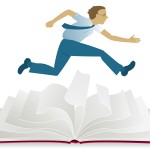
1) Survey
2) Skim reading
3) Purpose questions
What?
Who?
When?
Where?
Why and how?
this is to focus your concentration while you are surveying the subject.
3) Speculating
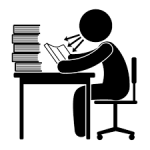
to set up a framework to prepare your mind, guess for answers, predict for event
4) Pacing:

Reading by rapid eye movements, fast paced ” skim reading ” ® get quick answers for the 5 Ws
Slow eye movements, for the “Study reading” if the material require analysis and evaluation
The study course plan:
Instructions:
التوصيات  · ركز في القراءة و ليس في الوقت
· ركز في القراءة و ليس في الوقت
· استعمل كل مهارة فورا
· خمن معنى الكلمة قبل القاموس
· سجل الوقت المستخدم
· استمتع بما تعمل.
Skill 1 —
— SURVEYING المسح
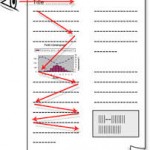
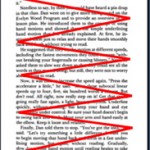
This tells you before reading about the writer and his ideas.
-
Charges you
-
Worthy or unworthy
-
Choose the important to read.
Consider your book as a trip, and answers the following questions?
Þ Where do I want to go?
Þ Why? (My goal of reading this book!)
Þ Best way to travel? (To quality of reading!)
Þ Warm or Cold? (The difficulty of the book!)
Þ How long to stay? (The required time!)
Þ How much it cost?
After Survey:
You are ready for actions; Survey is a preparatory step to decide. So Select the important and worthwhile, Eliminate the undesirable, and evaluate.
TO CONTINUE FOR PART 2
After Survey:
You are ready for actions; Survey is a preparatory step to decide. So Select the important and worthwhile, Eliminate the undesirable, and evaluate.
|
PROCEDURE TO FOLLOW FOR SURVEY? |
8 keys for surveying a subject…. The open doors to success, by Skim reading to gather information and to collect facts. By skim reading you can identify and organize ideas.
keys:
1. READ THE TITLE, SUBTITLE, SUMMARY AND ABSTRACT IF AVAILABLE.
2. AUTHOR, SOURCE, DATE AND PUBLIC COPYRIGHT
3. READ TABLE OF CONTENT
4. SEQUENCE OF MATERIAL, LOOK FOR LISTING, FIGURES SUMMARIES.
5. READ THE PREFACE, FOREWORD, INTRODUCTION, RECOMMENDATIONS AND CONCLUSION.
6. LOOK FOR MAPS, GRAPHS, ILLUSTRATIONS, CHARTS, BOLD QUESTIONS
7. ONE OR 2 PARAGRAPHS TO INSPECT THE AUTHOR FLOW OF THOUGHTS.
8. REVIEW TO DECIDE
PARAGRAPH READING:
How to read a paragraph:
Read the begging of each paragraph, usually discuss the topic or first sentence ® decide if you need the material of this paragraph® decide if the author thoughts are organized if not skim fast over the paragraph.
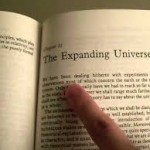
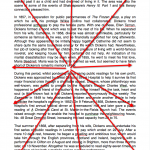
While you are surveying by skim reading you should keep in mind 5 Ws to answer, or to know other wise you are losing the material and you will regress your reading i.e. it will decline and you will put the book down.
¨ What? Happened … the information you need?
¨ Who? Persons among reading?
¨ Where? It happened?
¨ When? It happened and can change?
¨ Why? This happened? e.g. come and leave … list of reasons
Almost always ask yourself during reading …How? This happened, remember the steps, …etc.
So the questions goals
|
Reading the objectives Mental frame work for quick processing Organize your data |
Skim reading:
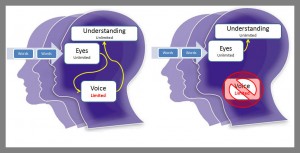
Shift reading; float on page, looking for the topic discussed (what?) Name of persons (who?) place (Where?), Time (when?) These names are usually overprinted, bold or capitalized for easy visual recognition.
while you are SKIMMING and questioning.
The most difficult questions are how and why ? You need all skills to answer those and to keep your mind alert with answers ® why? Include list of causes not only in one paragraph ® skim select a word or 2 from each paragraph ® may be numbered list is all your needs
skill 2
Speculation
(CONSIDERATION)(PROPOSAL) (IMAGINING) (PREDICTION):
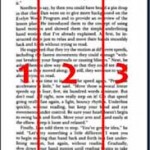
Is the most surprising tool, simple skill as if like speculating new neighbor or new country, quickly organize and frame new information?
How done?
Read information®predict more ® give answers ® don’t be afraid for wrong guess ® Seek new information ® Recollect yourself.
STUDY READING (SR):
SR <Skim Reading
Fast answers® Collect isolated facts for questions ® Arrange them in sequence to answer How and Why?
4 Steps for study reading
1. Gather data
2. Sorting facts
3. Measuring facts on basis of your past knowledge
4. Decide what to be stored? Reject needless!

REVIEW for then:
1- survey ® 8 keys
2- Purpose questions 5 Ws and How?
3- Speculate?
What is the writer, will give as answers to your questions = frame work for your storing new information = Helps to learn
4- skim rapid answers provided by writer ® paragraph reading
Study reading is like skim reading in the first 2 steps but it requires more evaluation and more analysis!
Showed be
Slowest + In depth + critical analysis + interpret + Evaluate + judge + reflect on information. It is vital for making decision
It is also for answering more complicated questions than skim reading does how and why? Your speed will be less but it isn’t necessary to accept all of the author talk.
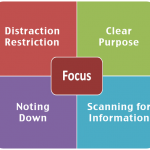
¨ CRITICAL Reading:
Judge about the writer’s premises views. Conclusion ” Take the whole elephant in one bite”.
Survey + Paragraph reading + questioning + detective attitude is it logic is it truth …Judge
SKILL 3
PACING:
(RATE) (STEP)

Hardest, break old habits and form new
Adult normal rate is 250 word /minute ® by pacing 600 -1000 word per minute
Mind is faster than eye, teach your eyes move quicker than it is and then quickest word by word or pacing
|
The adolescence is a period of transition from childhood to adulthood. i.e. 11-12® 19-20. Within this period the adolescent undergoes sexual maturity and establishes an identity as an individual apart from the family. During puberty there is a rapid physical maturation, also sexual reproduction system maturation over 3-4 years i.e. able to reproduce. Menarche is the first menstrual period , ovulation starts 1 year after menarche also boys have the first seminal fluid which process no sperms then increased gradually.
|
e.g. word by word reading is that your eye lies on each word
But reading by pacing there is a zone to glide on, this reduces the reading time by half but comprehension not by half .. Why? Because thinking is beyond things to see increase learning and memory, ® think more and see less glide over words and be sure that first 50 -100 times it will be frustrating and unable to comprehend never mind and try to practice more you must achieve this hardest skill.
The next figure shows you clearly how can you limit the page size and pace over words. The page could be less than half of its original size and by practice you can comprehend the more.
Author: Dr. Adel Serag
Prepare your book for pacing:
wait for the coming video
